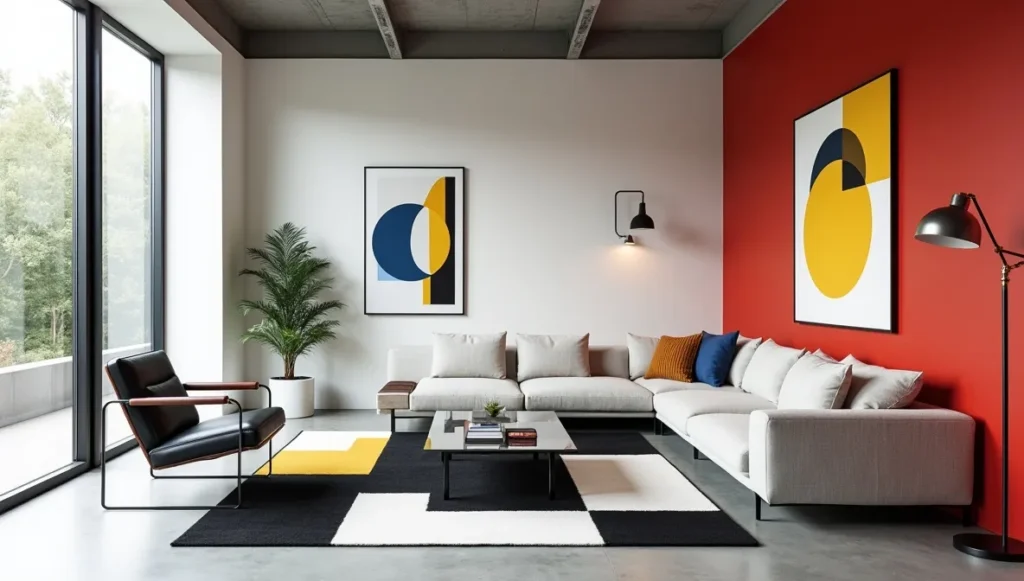- Bauhaus Interior Design: Why This 100-Year-Old Style Still Works Today - September 6, 2025
- Southwestern Interior Design: What I Wish I’d Known 20 Years Ago - September 6, 2025
- Why Norwegian Interior Design Actually Makes Your Home Feel Like Home - September 4, 2025
Table of Contents
Twenty-three years ago, I walked into my first design job thinking I knew everything about making spaces look good. Turns out I knew absolutely nothing about making spaces work well. That education came courtesy of a client who owned this stunning Victorian in Seattle – gorgeous moldings, intricate wallpapers, furniture that belonged in a museum. And chairs so uncomfortable that dinner parties ended before dessert arrived.
That’s when someone mentioned Bauhaus to me. Not as some fancy design movement, but as a way of thinking about rooms. What if everything in your house actually had a reason for being there? What if beautiful and useful weren’t opposites?
Walter Gropius figured this out back in 1919 when he started the Bauhaus school in Germany. His timing was perfect – people were tired of fussy, over-decorated everything and ready for something cleaner, more honest. A century later, we’re still catching up to his ideas.
The Thing About Function and Beauty
Most people think Bauhaus means sterile white rooms with uncomfortable furniture. That’s design school nonsense. Real Bauhaus is about removing anything that doesn’t make your life better while keeping everything that does.
Take my own living room. The coffee table is glass and steel – sounds cold, right? But I can see my kids’ toys underneath it, which means I’m not constantly nagging them to clean up. The leather sofa has clean lines but sinks perfectly when you sit down. The lamp adjusts so I can read without squinting. Everything looks good because everything works well.
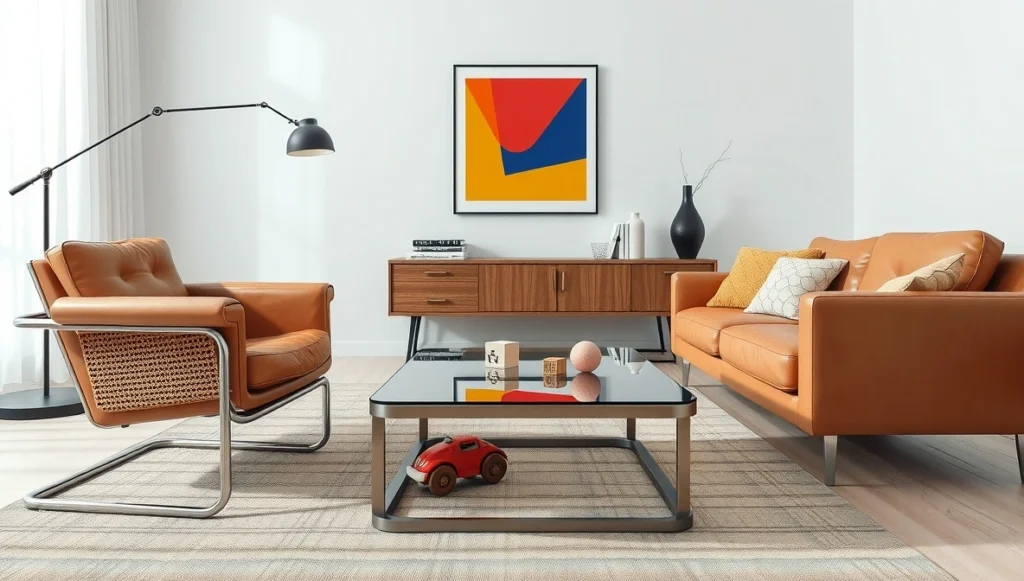
Clean lines don’t mean harsh lines. They mean intentional lines. No unnecessary curves or decorations, but also no sharp edges that bruise your shins in the dark.
Materials matter too, but not in the way design magazines pretend they do. Stainless steel and glass aren’t “sophisticated” – they’re practical. They clean easily, they age gracefully, and they don’t compete with each other for attention.
Colors in Bauhaus spaces stick to basics because basics don’t get boring. White walls, black accents, natural wood, maybe some red or blue if you’re feeling bold. Sounds limiting until you realize how peaceful it feels to come home to colors that never shout at you.
Room by Room Breakdown
Living Rooms Worth Living In
My living room has evolved over the years, but the bones stay the same. Good seating arranged in ways that actually encourage conversation. A coffee table that can handle real life – drinks, books, feet up after work. Lighting that adapts to what you’re doing instead of just looking pretty.
The leather sectional we bought fifteen years ago looks better now than it did new. The kids have spilled countless things on it, friends have napped on it, and it just keeps getting more comfortable. That’s what good materials do – they improve with use instead of falling apart.
The side tables are simple wood and steel. Expensive? Not really. But they’ll outlast three generations of trendy alternatives. Sometimes the smart money is the patient money.
Storage happens where you need it, not where it looks cute. Books live near reading chairs. Remote controls have a designated spot that isn’t “somewhere in the couch cushions.” Revolutionary thinking, I know.
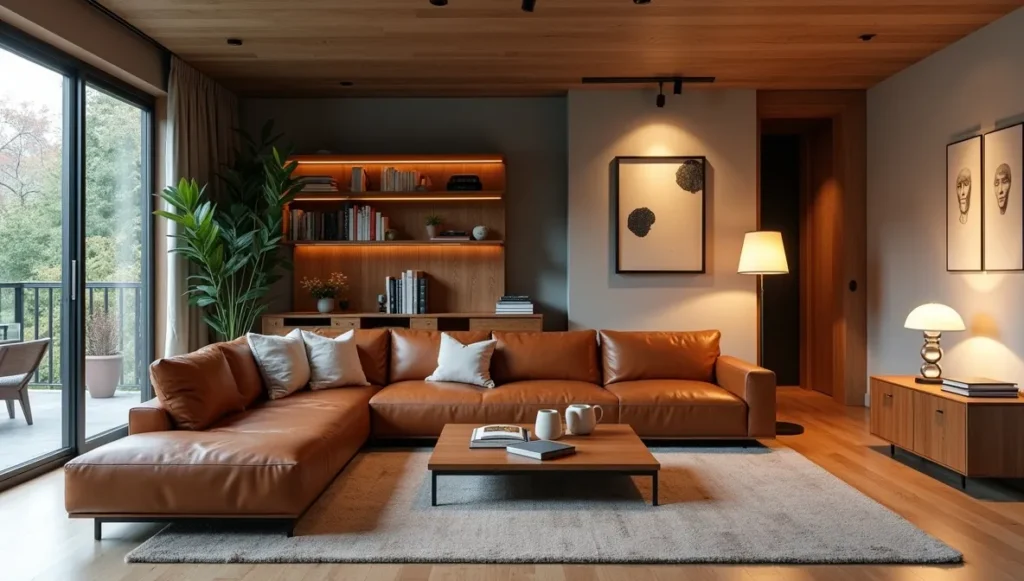
Kitchens That Work With You, Not Against You
Kitchen design drives me crazy because so many people prioritize photos over cooking. Open shelving everywhere, marble counters that stain if you look at them wrong, islands so big you need a map to find the refrigerator.
Bauhaus kitchens are simpler and smarter. Cabinets with clean lines and hardware that won’t break. Counters that can handle actual cooking. Storage that makes sense for how you eat, not how magazines think you should eat.
My own kitchen has white subway tile and stainless appliances. Basic? Sure. But I spend zero time worrying about whether they’re trendy enough and all my time actually cooking. The prep area is close to the stove, the cleanup area is near the dishwasher, and everything I use daily is within arm’s reach.
The island is big enough to be useful, small enough that two people can cook without bumping into each other. The bar stools tuck completely under the counter when not in use. Form following function in real time.
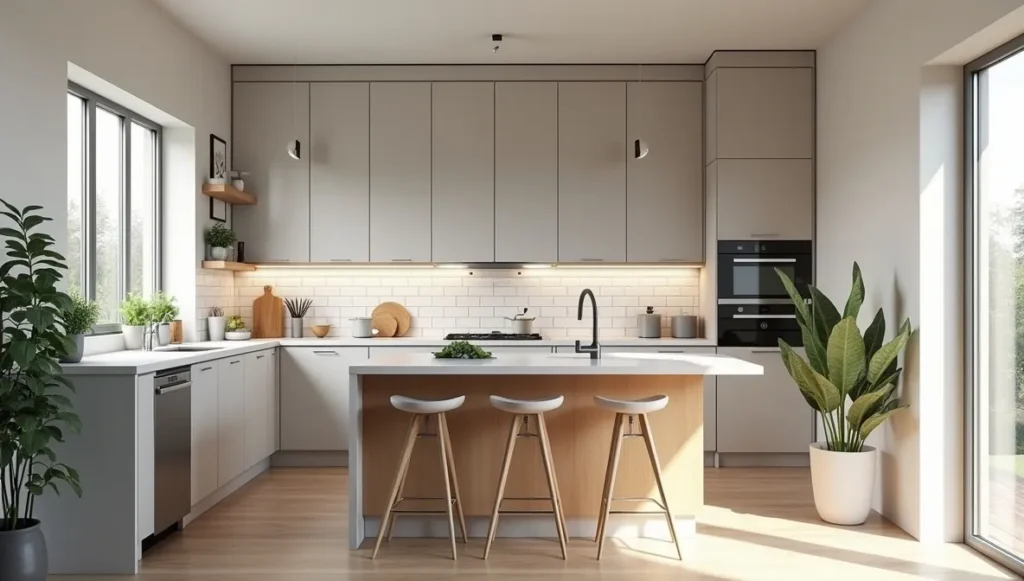
Bedrooms for Actual Sleep
Bedrooms should help you relax, not impress visitors. Platform beds with good mattresses, blackout shades that actually block light, surfaces clear enough that you’re not staring at piles of stuff when you’re trying to wind down.
Built-in storage works wonders when done right. Everything behind closed doors, everything in its place. Can’t do built-ins? Find furniture that stores things without advertising it. The dresser doesn’t need to be sculptural – it needs to hold clothes and stay out of the way.
Good sheets matter more than fancy headboards. White or cream cotton that gets softer with washing beats decorative pillows that you remove every night and replace every morning. Sleep is too important for staging.

Home Offices That Actually Help You Work
Working from home taught everyone what designers have always known – your environment affects your productivity more than you think it does.
Simple desk, comfortable chair, good light where you need it. Everything else is just distraction. That curved desk might look impressive on Instagram, but a rectangular surface gives you more usable space and costs less money.
Cable management isn’t glamorous, but visual clutter creates mental clutter. A few simple organizers keep everything tidy without turning your desk into mission control.
The lamp on my desk adjusts in three directions and has lasted eight years. It cost more than the cheap alternatives, but it’s paid for itself in reduced eye strain and not having to replace it every two years.
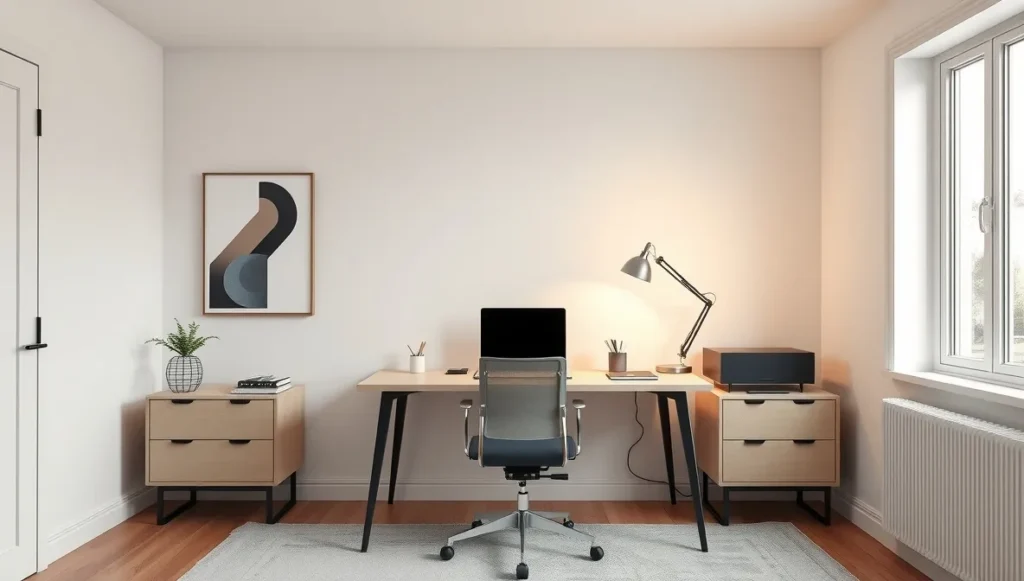
Bathrooms You Don’t Dread Cleaning
Small bathrooms especially benefit from Bauhaus thinking because every square inch counts. Wall-mounted vanities make floors easier to clean and rooms feel larger. Simple tile patterns don’t compete with your reflection in the morning.
Fancy fixtures with lots of decorative details collect soap scum and require special cleaning products. Simple, well-made faucets and hardware stay clean with basic maintenance and last longer too.
Large mirrors reflect light and make spaces feel bigger. Obvious? Maybe. But obvious solutions work better than clever ones most of the time.
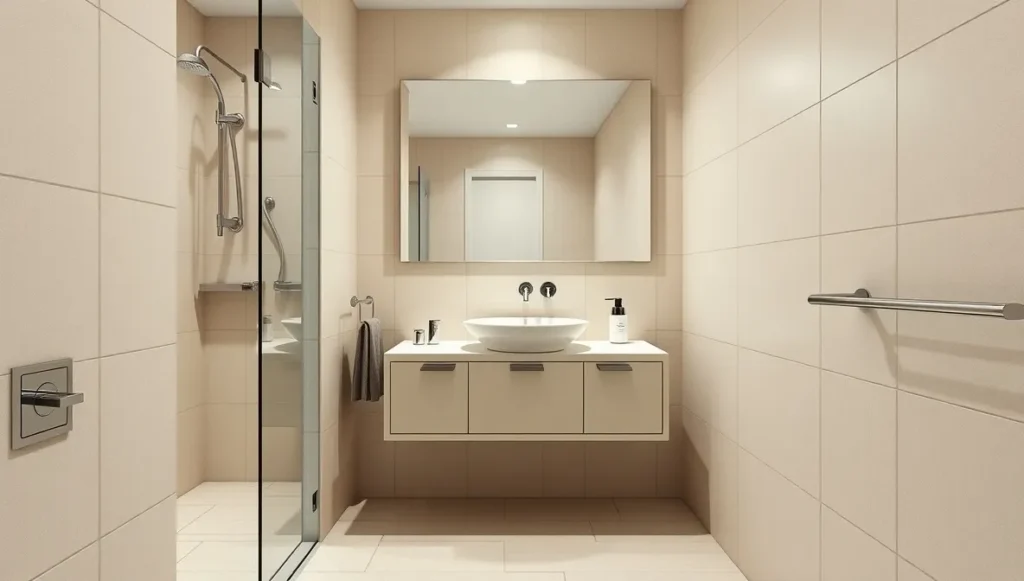
Why This Approach Makes Sense Now
We’re drowning in stuff. Amazon packages arrive daily, social media shows us new things to want hourly, and most of us barely have time to enjoy what we already own. Bauhaus principles offer an antidote – buy less, choose better, focus on what actually improves your daily life.
The environmental argument is obvious but worth repeating. Quality furniture that lasts decades uses fewer resources than trendy pieces that end up in landfills every few years. Your wallet and the planet both benefit from buying once instead of buying repeatedly.
There’s also something to be said for visual calm in an increasingly chaotic world. Coming home to spaces that feel peaceful and organized isn’t luxury – it’s necessity for mental health.
Getting Started Without Going Broke
Don’t gut your entire house next weekend. Pick one room that bothers you most and start there. Remove everything that doesn’t serve a clear purpose. Look at what remains with fresh eyes.
Replace pieces gradually with better versions that have cleaner lines and multiple functions when possible. Quality over quantity, always. One good piece beats three mediocre ones every time.
IKEA actually makes some excellent Bauhaus-inspired furniture at prices that won’t require a second mortgage. Mix those pieces with vintage finds and one or two investment items for a look that feels collected over time rather than purchased all at once.
Pay attention to how changes affect your daily routine. Good design should make life easier, not just prettier. If something looks great but annoys you every day, it’s not good design.
The goal isn’t creating a museum or matching some magazine photo. It’s creating a home that supports how you actually live while looking good enough that you enjoy being there. After two decades in this business, that still seems like the only definition of success that matters.
